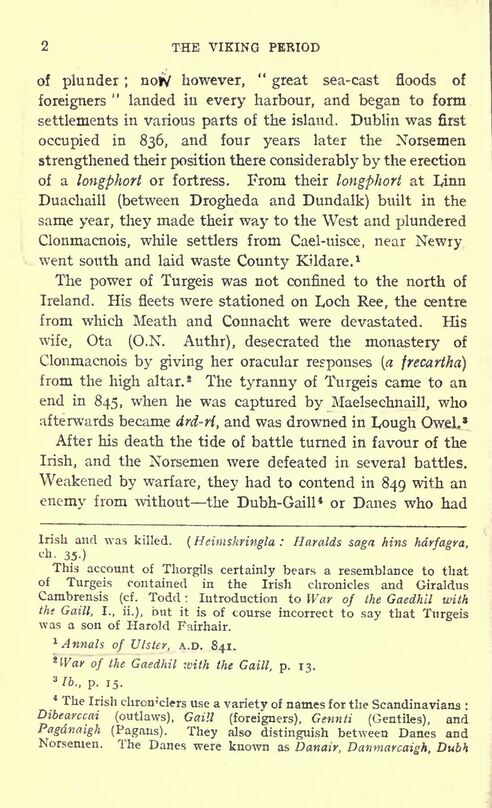
Full resolution (JPEG) - On this page / på denna sida - I. The Vikings in Ireland (795-1014)

<< prev. page << föreg. sida << >> nästa sida >> next page >>
Below is the raw OCR text
from the above scanned image.
Do you see an error? Proofread the page now!
Här nedan syns maskintolkade texten från faksimilbilden ovan.
Ser du något fel? Korrekturläs sidan nu!
This page has been proofread at least once.
(diff)
(history)
Denna sida har korrekturlästs minst en gång.
(skillnad)
(historik)
of plunder; now however, “great sea-cast floods of
foreigners” landed in every harbour, and began to form
settlements in various parts of the island. Dublin was first
occupied in 836, and four years later the Norsemen
strengthened their position there considerably by the erection
of a longphort or fortress. From their longphort at Linn
Duachaill (between Drogheda and Dundalk) built in the
same year, they made their way to the West and plundered
Clonmacnois, while settlers from Cael-uisce, near Newry,
went south and laid waste County Kildare.[1]
The power of Turgeis was not confined to the north of
Ireland. His fleets were stationed on Loch Ree, the centre
from which Meath and Connacht were devastated. His
wife, Ota (O.N. Authr), desecrated the monastery of
Clonmacnois by giving her oracular responses (a frecartha)
from the high altar.[2] The tyranny of Turgeis came to an
end in 845, when he was captured by Maelsechnaill, who
afterwards became árd-rí, and was drowned in Lough Owel.[3]
After his death the tide of battle turned in favour of the
Irish, and the Norsemen were defeated in several battles.
Weakened by warfare, they had to contend in 849 with an
enemy from without—the Dubh-Gaill[4] or Danes who had
<< prev. page << föreg. sida << >> nästa sida >> next page >>